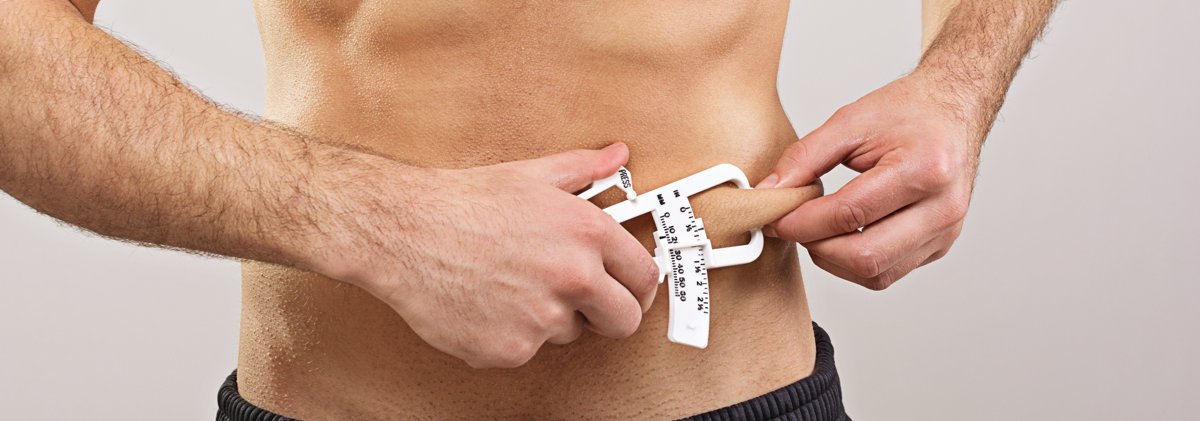
Everyone has body fat. You have it and your neighbor has it. It can have a huge impact on our health, so it’s important to understand what it is, why we need some of it, and how to get rid of the rest of it.
Here are 7 things you need to know about body fat:
1. The body fat basics.
When we hop on the scale, the scale shows us our body weight. That number includes all our total body composition: bones, muscles, organs, fat, etc. For the purposes of body fat, we think of it in two parts: body fat and everything else. Likewise, fat can be divided into essential fat and nonessential fat. Essential fat is the minimal amount of fat necessary for proper body function. This differs based on gender. For males, it’s 3 percent, and for women, it’s 12 percent. Anything above this is considered nonessential fat. A healthy range is usually 10-22 percent for men and 20-32 percent for women.
2. BMI is an effective measurement.
BMI is not a perfect measure of body fat, however, it is still effective and easy to calculate. Since BMI does not directly assess body fat, it can overestimate body fat in athletes and underestimate it in older people. Generally, it is a very reasonable way to estimate body fat. A BMI of 18.5 to 24.9 is considered normal; 25 to 29.0, overweight; and 30 or more, obese.
To calculate your BMI just visit the Harvard Health Publication calculator.
3. Where is the majority of your body fat?
BMI does not calculate the location of the fat, so it can be helpful to pair it with measurements using a tape measure. Men should measure the circumference of their abdomen while women should measure the circumference of their natural waist and hips.
4. Gender differences are a serious consideration.
Men usually store their excess fat around the belly, whereas women store it around the legs and lower body. This gives them the apple shape and pear shape, respectively. As mentioned above, upper body fat can be a formidable foe, however, some scientists now suggest some lower body fat may actually be a friend to your health.
5. Leverage your anatomy.
Harvard Medical School is investigating two phenomena that may help burn fat: brown fat cells and a hormone called irisin. “Brown fat cells don’t store fat: they burn fat. If your goal is to lose weight, you want to increase the number of your brown fat cells and to decrease your white fat cells,” says Dr. Anthony Komaroff, a professor at Harvard Medical School. And Irisin may do just that.
Irisin does this, at least in mice. And those newly-created brown fat cells keep burning calories after exercise is over.
6. Increase your metabolism.
Yes, metabolism fluctuates based on the individual, and it can have a powerful effect on body fat. The good news is that metabolism can be developed. Various factors can be manipulated to increase metabolism. “You can manipulate your metabolism to a degree. It is often a small change that may help you burn more calories. That, along with adopting a healthier diet and making sure you get enough exercise, may give people the extra push they need to lose and maintain weight.” – Dr. Chih-Hao Lee, professor of genetics and complex diseases at Harvard’s T.H. Chan School of Public Health.
Body composition: Muscles use more calories than fat. Replace that fat with muscle through strength training and your body will burn more calories.
Calorie restriction: If we cut a large number of calories out of our diet quickly in an attempt for quick weight loss, it will actually have the opposite effect. Self-starvation through detoxing or fasting decreases metabolism over longer periods of time (1-3 months). Instead, maintain small, sensible deficits in calorie intake. Average healthy calorie intake (restricted) is 1,200 calories per day for women and 1,800 per day for men. But you can calculate a more precise estimate with a FREE calculator based on the Mifflin-St. Jeor equation used to determine an individual’s resting energy expenditure. Studies have found this calculator to be an effective way to calculate your daily resting energy expenditure.
Diet: Certain foods can increase our metabolism. Eat more of them. Lean protein requires more energy to digest and contains more fiber, keeping you full longer.
Also, always remember to stay hydrated.
7. Nothing beats exercise!
At the end of the day, as always, there is no substitute for good, high-level exercise. A study in the British Journal of Sports Medicine, researchers found that vigorous exercise may be the best way to burn off nonessential fat. After observing high-intensity interval training and moderate-intensity continuous training, researchers determined:
“Interval training provided 28.5% greater reductions in total absolute fat mass (kg) than MOD.”
So, if you want to be healthy, get out and exercise, whether it’s out on the track or on the treadmill.
DISCLAIMER: This post is not intended to replace the advice of a medical professional. The above information should not be used to diagnose, treat, or prevent any disease or medical condition. Please consult your doctor before making any changes to your diet, sleep methods, daily activity, or fitness routine. NordicTrack assumes no responsibility for any personal injury or damage sustained by any recommendations, opinions, or advice given in this article.
Sources:
http://www.humankinetics.com/AcuCustom/Sitename/DAM/127/FatMetabolismandGenderDifferences.pdf
https://www.diabetes.co.uk/bmi/how-accurate-is-bmi.html
https://www.health.harvard.edu/bmi-calculator
http://www.health.harvard.edu/staying-healthy/big-thighs-may-be-wise
http://www.health.harvard.edu/staying-healthy/major-fat-burning-discovery
https://www.physiology.org/doi/full/10.1152/ajpendo.00094.2016
https://www.health.harvard.edu/staying-healthy/the-truth-about-metabolism
http://www.unm.edu/~lkravitz/Article%20folder/metabolismcontroversy.html
https://www.ncbi.nlm.nih.gov/books/NBK22414/
https://www.healthline.com/nutrition/how-many-calories-per-day
https://www.ncbi.nlm.nih.gov/pubmed/2305711
https://www.ncbi.nlm.nih.gov/pubmed/25926512
https://bjsm.bmj.com/content/53/10/655.short
https://academic.oup.com/ajcn/article/101/6/1320S/4564492
https://www.precisionnutrition.com/digesting-whole-vs-processed-foods
https://www.nordictrack.com/learn/combining-hiit-and-incline-training-ifit/


